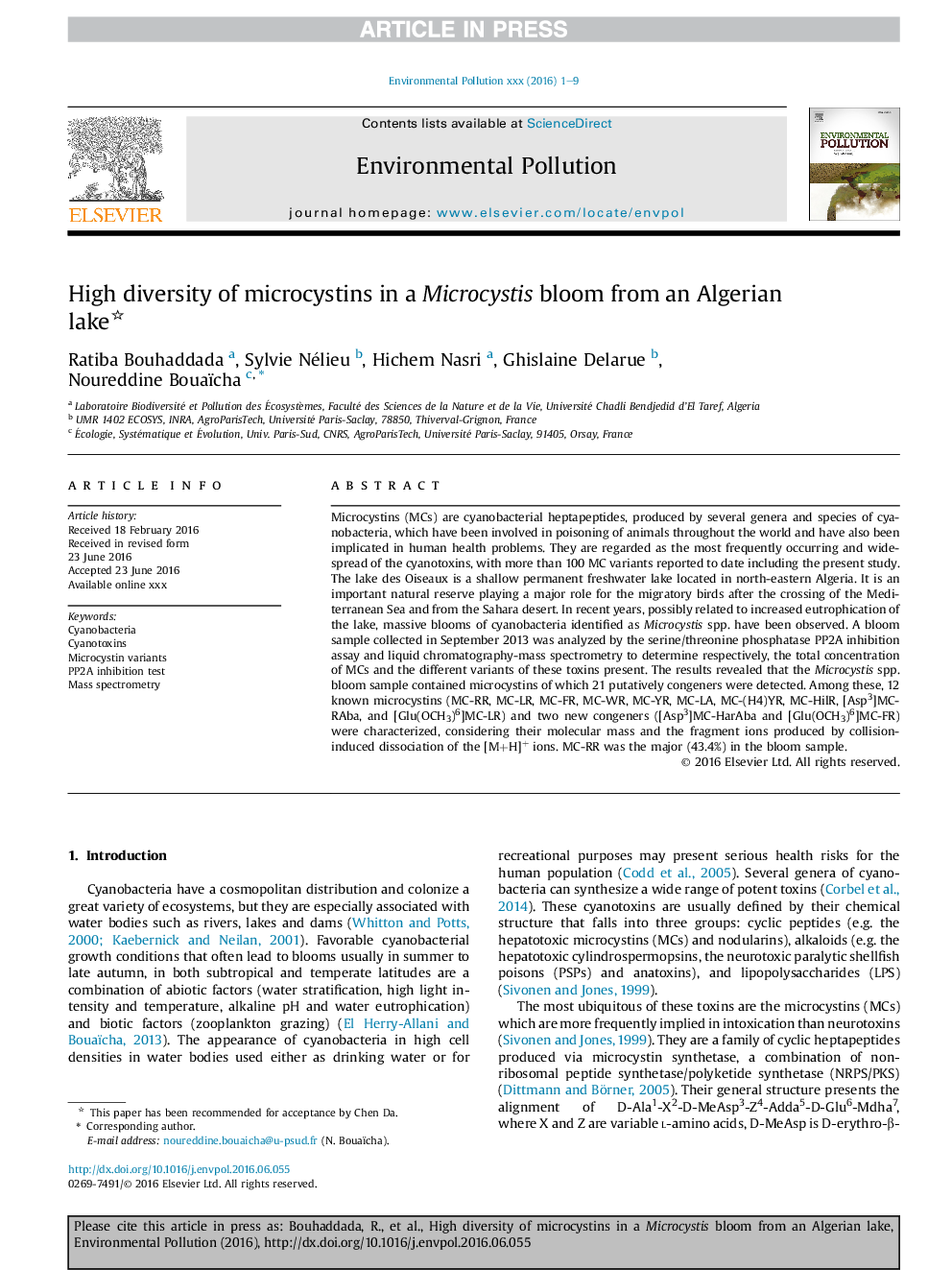| Article ID | Journal | Published Year | Pages | File Type |
|---|---|---|---|---|
| 6315985 | Environmental Pollution | 2016 | 9 Pages |
Abstract
Microcystins (MCs) are cyanobacterial heptapeptides, produced by several genera and species of cyanobacteria, which have been involved in poisoning of animals throughout the world and have also been implicated in human health problems. They are regarded as the most frequently occurring and widespread of the cyanotoxins, with more than 100Â MC variants reported to date including the present study. The lake des Oiseaux is a shallow permanent freshwater lake located in north-eastern Algeria. It is an important natural reserve playing a major role for the migratory birds after the crossing of the Mediterranean Sea and from the Sahara desert. In recent years, possibly related to increased eutrophication of the lake, massive blooms of cyanobacteria identified as Microcystis spp. have been observed. A bloom sample collected in September 2013 was analyzed by the serine/threonine phosphatase PP2A inhibition assay and liquid chromatography-mass spectrometry to determine respectively, the total concentration of MCs and the different variants of these toxins present. The results revealed that the Microcystis spp. bloom sample contained microcystins of which 21 putatively congeners were detected. Among these, 12 known microcystins (MC-RR, MC-LR, MC-FR, MC-WR, MC-YR, MC-LA, MC-(H4)YR, MC-HilR, [Asp3]MC-RAba, and [Glu(OCH3)6]MC-LR) and two new congeners ([Asp3]MC-HarAba and [Glu(OCH3)6]MC-FR) were characterized, considering their molecular mass and the fragment ions produced by collision-induced dissociation of the [M+H]+ ions. MC-RR was the major (43.4%) in the bloom sample.
Related Topics
Life Sciences
Environmental Science
Environmental Chemistry
Authors
Ratiba Bouhaddada, Sylvie Nélieu, Hichem Nasri, Ghislaine Delarue, Noureddine Bouaïcha,
